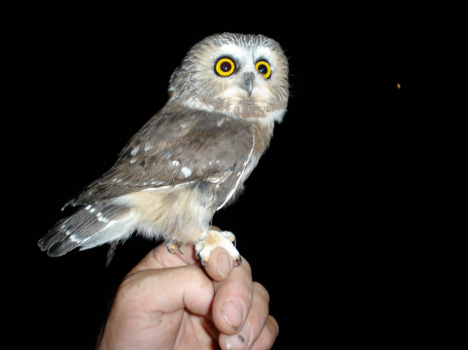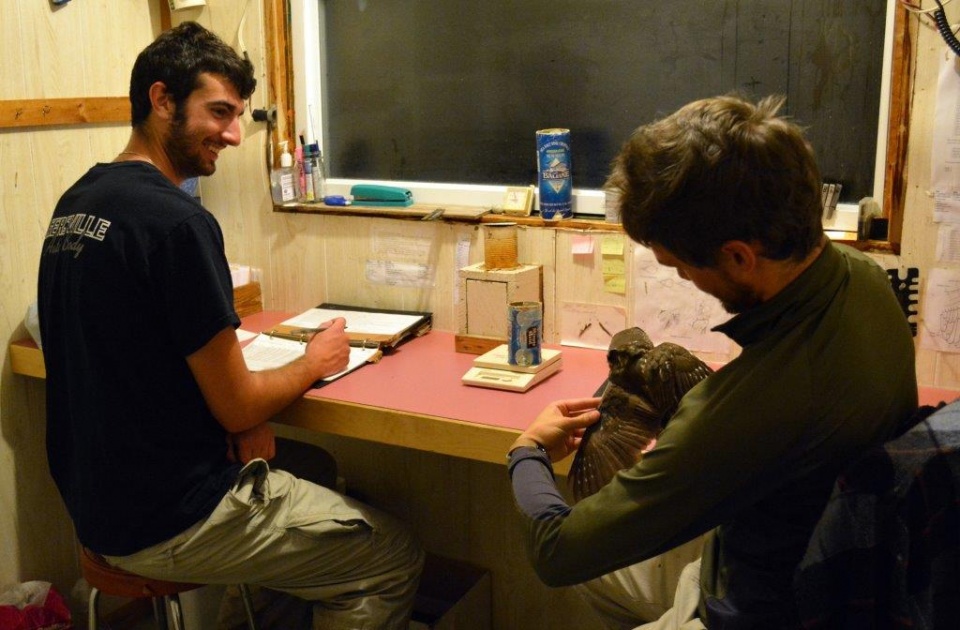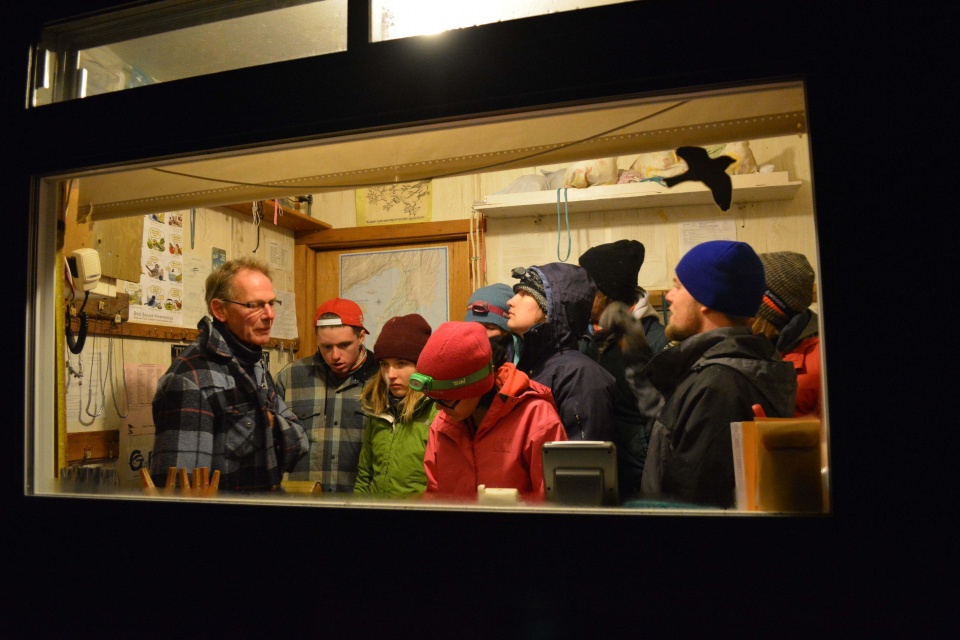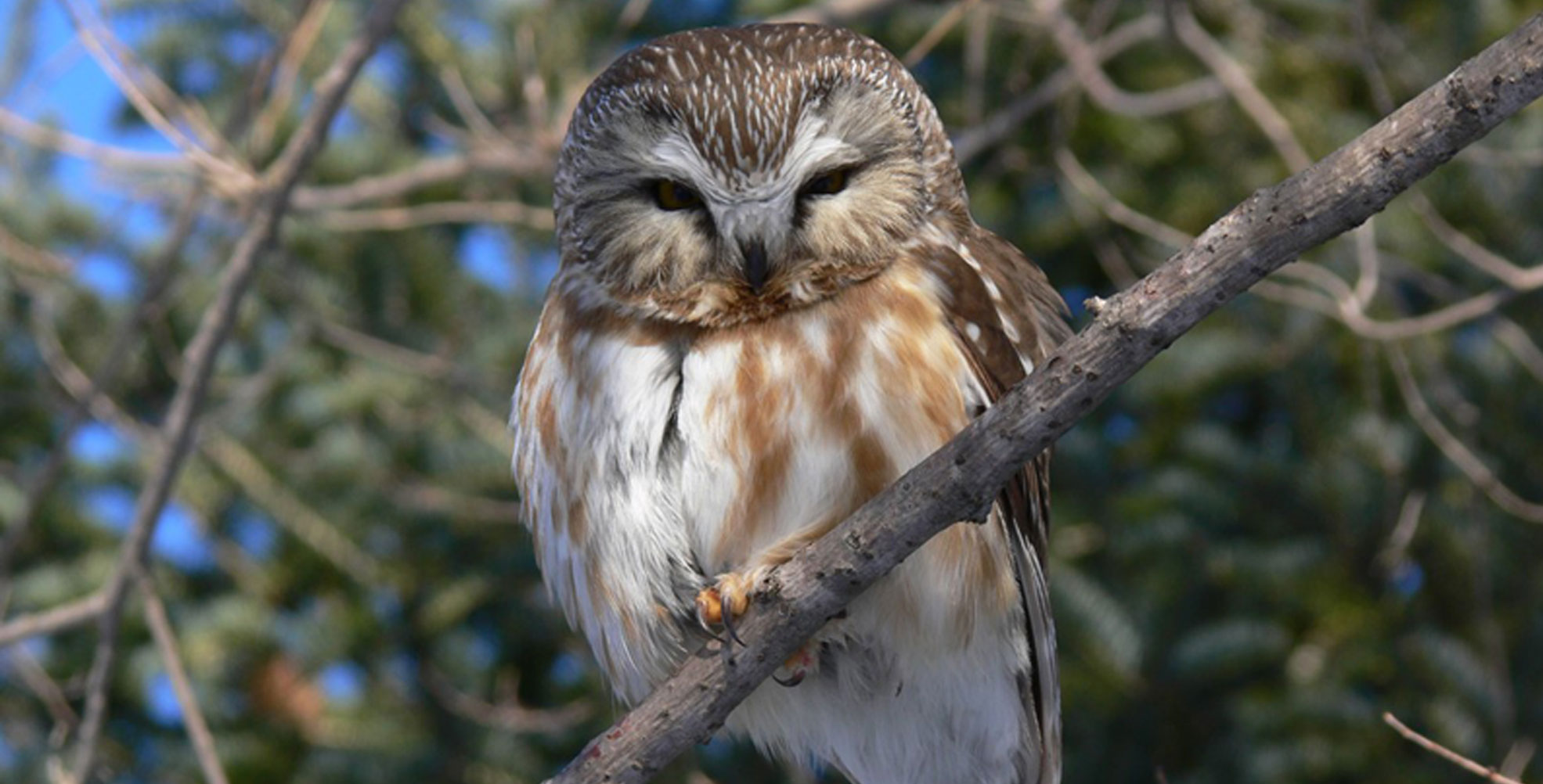Owl Monitoring
Saw-whet Owl Migration Monitoring
In the first three fall seasons of Thunder Cape Bird Observatory’s operation (1991 – 1993), owl banding took place on a casual basis and met with considerable success. During this period, 219 Northern Saw-whet Owls were banded.
In the fall of 1994, the observatory began monitoring Northern Saw-whet Owl migration at Thunder Cape following a standardized protocol. This was to be done through netting and banding for a fixed period each night (min. 4 hrs) during a period consistent with the migration window for saw-whets, mid September through late October. Lure tapes of a calling saw-whet have proven very successful at other banding stations, and TCBO opted for this method. Over the years, there have been several minor changes in methodology, including net locations, mesh size of nets and net height. However, these changes have been done in a way as not to compromise or invalidate previous years’ data. There have been no changes in protocol since 2000. Averages of about 300 saw-whets are banded each fall with highs of 642 and 625 being banded in 1999 and 2010 respectively.
Since 1994, 6,548 saw-whets have been banded. Since 1991, 183 of “our” birds have been recovered in other locations. Most recoveries were from established banding stations located along the shores of the western Great Lakes, and at inland locations in Minnesota, Wisconsin and Michigan. More recoveries (70) were made at Hawk Ridge, Minnesota than at any other location. Following the shoreline southwest from Thunder Cape seems to be the overwhelmingly preferred route by saw-whets. We have had 17 recoveries from Whitefish Point Michigan suggesting that some birds travel east along the north shore of Lake Superior and then head south via the Upper Peninsula of Michigan. We have had encounters reported from Illinois, Indiana, Iowa, Michigan, Missouri, New Hampshire, Ontario, Quebec, Saskatchewan, and West Virginia. Some of the more remote recoveries of our Saw-whet Owls were made at Long Point Bird Observatory in southern Ontario, Metamora Illinois, Nashville Indiana, Chesterfield New Hampshire, Edenwold Saskatchewan, and Fairmont West Virginia.
Based on recovery information, it takes an average of 2 weeks to reach Hawk Ridge (average speed of 19 km per night), although one speedster made it in 6 nights, averaging 45 km per night. A Saw-whet Owl we banded on September 21, 2008 was recaptured 1,500 km away 3 weeks later in Pisgah State Park, New Hampshire. It flew an average of 71.5 km/day or about 12 km/hr, (assuming it flew 6 hours each night). We have also recaptured 77 birds that we banded in previous years at TCBO.
Gallery


Who are you? (K. Prince photo) 
Cody and Gildas and Northern Saw-whet Owl (R. Boardman photo) 
Owl demonstration

